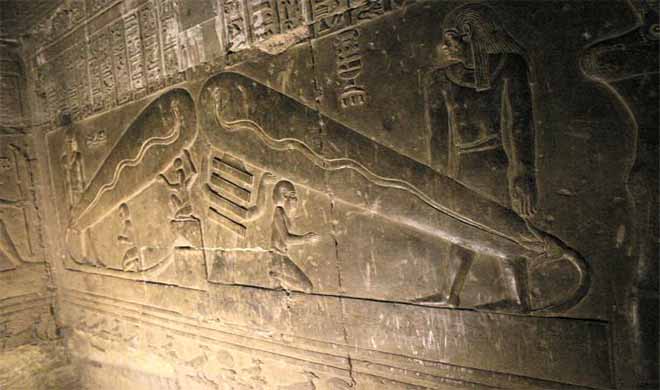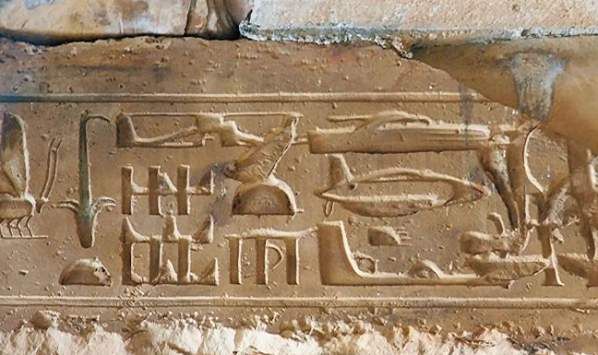The Dendera Bulb - Light of Ancient Egypt ?

It all started thanks to Auguste Mariette, the French archaeologist founder of the Museum of Egyptian Antiquities in Cairo. First of all, we owe him the campaign of excavations carried out in 1857 about 70 kilometers from Thebes, the country's capital for almost a thousand years. The current Luxor is an hour's flight from Cairo and has left in evidence of its former splendor the remains of the majestic temples of the legendary Valley of the Kings - on the opposite bank of the Nile - with the tombs of the most famous pharaohs: Seti, Ramses, Thutmose and Tutankhamun.
Auguste Mariette, attracted by the temple dedicated to the goddess Hathor, begins his excavations in Dendera. Under the temple, he discovers vast crypts cluttered with sand and rubbish which, once cleaned, consist of a large number of rooms with walls covered with engraved stone slabs. Mariette's drawings bear witness to these engravings, as well as the many photos taken later, in the 1930s, by another Frenchman, Émile Chassinat. In the 1970s, these crypts were closed to the public, because over time most of the slabs were stolen. Only one room has been spared and its walls show engravings so mysterious that they still fuel the most diverse hypotheses today.
Dendera light bulb : Egyptians and electrical energy
Could it be that the Egyptians had knowledge that we ignore? Dendera has been a place of worship for centuries. These underground rooms constitute the heart of a temple which officially dates back to the 15th century BC, although some inscriptions evoke even older times. The upper part dates from the Ptolemaic period, between 300 and 30 BC, closed by the accession to the throne of Cleopatra.
What is so strange about these inscriptions known as the Dendera lights ? In a scene which shows the priests of the temple celebrating the sacred rites, we note disturbing resemblances with resolutely modern devices and technologies. Some of these images look surprisingly like X-ray bulbs, knowing that this object will be invented only in 1879. Dendera's bulbs would therefore be sort of ancestors of the “Crookes tube”, an electronic tube with cold cathode, able to produce X-rays. By a strange coincidence, the English scientist inventor of the homonymous tube, Sir William Crookes, completed his studies ten years after the publication of Mariette's drawings. Some even think that these drawings, and in particular those of the bulbs, would have inspired his research ...
Lotus flower or X-ray emitter ?
However, opinions are divided. Indeed, according to official Egyptologists, what appears on the engraved plate is only a huge lotus flower. But again, opinions differ. What some people guess is the stem of the flower, others recognize a long power cable. Halfway up the object, some see a part of Osiris' back, others see the electrical component necessary for the functioning of the Crookes bulb.
What is officially described as a snake reminds “dissidents” of the electric filament that is inside the Crookes tube. Finally, the deity who holds two daggers in his hand as if to defend himself from danger, at the end of the mysterious object, would be exactly opposite the point from which the X-rays of the alleged bulb appear.
Abydos helicopter

This long mysterious hieroglyph eventually revealed its secret. On the Abydos site, the image which seems to represent helicopters and tanks is actually the result of the superposition of two different hieroglyphs. As was customary at the time, the new pharaoh took over some of the signs left by his predecessors, by writing on them. The damage to part of the material modified the inscriptions, suggesting these images. The oldest inscription should be attributed to Seti 1, the second to Ramses II, his successor.









































































































































































































































































































































